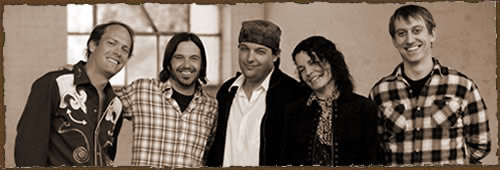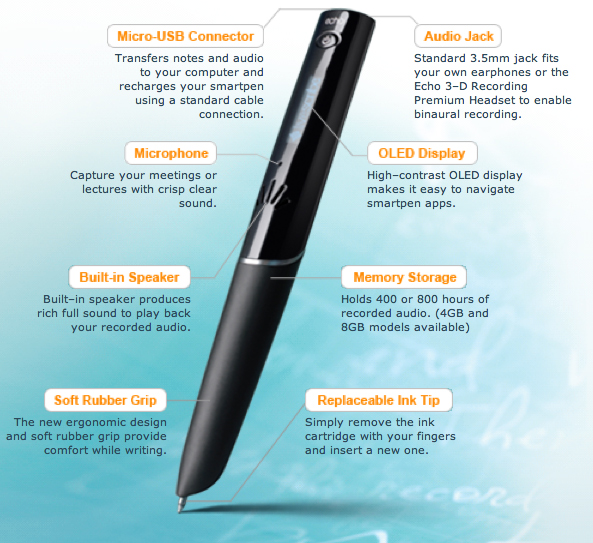 Now that I’ve written that title, let me check. Christian McBride qualified as a young lion in the early 1990s, but he’s just turned forty. He’s got some old soul, though, perhaps the result of coming up with Bobby Watson’s group, playing with Milt Jackson, J.J. Johnson, and Freddy Hubbard. He’s a master of control, a craftsman of the first order and an ideal mate for the his very talented pianist Christian Sands, himself a protege of old soul Billy Taylor. Rounding out the trio is an equally top-rank player, Ulysses Owens, Jr. The name of the CD, on Mack Avenue records, is Out Here, and it’s very satisfying, clean and varied with tight, focused performances. This is jazz composition and performance of the highest caliber. There’s a lot of strong material here, but McBride’s own “Ham Hocks and Cabbage” is especially fine. Oscar Peterson’s “Hallelujah Time” is wistful, pensive, and sweet, nicely played by Sands. Dr. Billy Taylor’s “Easy Walker” is another of the CD’s best tracks, mostly because of the strolling, gently swinging motion of McBride’s bass, and its interplay with the Sands’ piano. Best of all: McBride bowing his way through the sentimental melody, “I Have Dreamed.” Selecting individual tracks is fun for me because everything here is so well-constructed and winning, but the funk of “Who’s Making Love” is lots of fun–with McBride doing a bit of showboating on a tune that can easily handle it. If you’re beginning to think about gifts for the holiday season, this is one in the category of “you can’t go wrong.”
Now that I’ve written that title, let me check. Christian McBride qualified as a young lion in the early 1990s, but he’s just turned forty. He’s got some old soul, though, perhaps the result of coming up with Bobby Watson’s group, playing with Milt Jackson, J.J. Johnson, and Freddy Hubbard. He’s a master of control, a craftsman of the first order and an ideal mate for the his very talented pianist Christian Sands, himself a protege of old soul Billy Taylor. Rounding out the trio is an equally top-rank player, Ulysses Owens, Jr. The name of the CD, on Mack Avenue records, is Out Here, and it’s very satisfying, clean and varied with tight, focused performances. This is jazz composition and performance of the highest caliber. There’s a lot of strong material here, but McBride’s own “Ham Hocks and Cabbage” is especially fine. Oscar Peterson’s “Hallelujah Time” is wistful, pensive, and sweet, nicely played by Sands. Dr. Billy Taylor’s “Easy Walker” is another of the CD’s best tracks, mostly because of the strolling, gently swinging motion of McBride’s bass, and its interplay with the Sands’ piano. Best of all: McBride bowing his way through the sentimental melody, “I Have Dreamed.” Selecting individual tracks is fun for me because everything here is so well-constructed and winning, but the funk of “Who’s Making Love” is lots of fun–with McBride doing a bit of showboating on a tune that can easily handle it. If you’re beginning to think about gifts for the holiday season, this is one in the category of “you can’t go wrong.”
So who’s older: pianist Keith Jarrett or vibraphonist Gary Burton? Both musicians started their career in the early 1960s, both have recorded dozens of albums, both are veterans of the jazz fusion era and managed to forge remarkable careers as collaborators.
 Jarrett’s work is immediately magical, glorious in its improvisation and sonic exploration. He’s been doing these albums for decades, and yet, every time I put a Jarrett CD on (or, for that matter, an LP), I’m immediately transported into the filagree of his imagination, sipping a drink at an after-hours jazz bar where the player is extraordinary and I just don’t want the evening to ever end. Recorded live at the KKL Luzern Concert Hall, the CD called Somewhere begins with the mind-bending “Deep Space,” and here, it’s Jarrett’s show with just the right additional color and light provided by double bassist Gary Peacock and drummer Jack DeJohnette; later in the track (the second part is Miles Davis’s “Solar,” their interplay moves the music into an even more interesting exploration, a testament to the extreme skill, experience and love of experimentation that these three musicians consistently offer. So that’s one track, again the first, and again, a favorite. (And I suppose I should mention that the sonic fidelity of these recordings is at such a high level, it would be difficult to imagine a disc sounding any better.) There are some favorite standards here (mine, anyway); it’s difficult for me not to be captivated by Leonard Bernstein’s “Somewhere;” and the less-often-heard “Stars Fell on Alabama” and the Jimmy van Heusen- Johnny Mercer tune, “I Thought About You.” Ooops–I’m listening to the wrong track–that’s really catchy, and less schticky than I remembered: “Between the Devil and the Deep Blue Sea”–well, a little schtick for me. Back to the dark night sky and mystery of “Stars Fell…” and my mind easily drifts to Perseids and stardust. What a lovely album.
Jarrett’s work is immediately magical, glorious in its improvisation and sonic exploration. He’s been doing these albums for decades, and yet, every time I put a Jarrett CD on (or, for that matter, an LP), I’m immediately transported into the filagree of his imagination, sipping a drink at an after-hours jazz bar where the player is extraordinary and I just don’t want the evening to ever end. Recorded live at the KKL Luzern Concert Hall, the CD called Somewhere begins with the mind-bending “Deep Space,” and here, it’s Jarrett’s show with just the right additional color and light provided by double bassist Gary Peacock and drummer Jack DeJohnette; later in the track (the second part is Miles Davis’s “Solar,” their interplay moves the music into an even more interesting exploration, a testament to the extreme skill, experience and love of experimentation that these three musicians consistently offer. So that’s one track, again the first, and again, a favorite. (And I suppose I should mention that the sonic fidelity of these recordings is at such a high level, it would be difficult to imagine a disc sounding any better.) There are some favorite standards here (mine, anyway); it’s difficult for me not to be captivated by Leonard Bernstein’s “Somewhere;” and the less-often-heard “Stars Fell on Alabama” and the Jimmy van Heusen- Johnny Mercer tune, “I Thought About You.” Ooops–I’m listening to the wrong track–that’s really catchy, and less schticky than I remembered: “Between the Devil and the Deep Blue Sea”–well, a little schtick for me. Back to the dark night sky and mystery of “Stars Fell…” and my mind easily drifts to Perseids and stardust. What a lovely album.
 The old guy in the crowd–Gary Burton is 70 to Keith Jarrett’s 68–opens with a Antonio Sanchez’s rocking drum, instantly establishing a more ambitious, brighter tone for the new Guided Tour, also from Mack Avenue. This is a quartet with Burton leading as one might do with a piano. Sanchez really drives this music. It’s a bigger sound than you would typically expect from a quartet. Burton is leading an exploration not entirely different from Jarrett, but more clearly articulated, more melodic, catchier. The difference is the way that Julian Lage is playing electric guitar, almost as if he’s playing in the style of Burton and his vibes on “Jane Fonda Called Again,” never passive or receding or relaxed, but instead, aggressive and punchy. Yes, they play pretty, too, working the pastoral mood on “Jackalope,” and the Latin romance of “Helena” (especially nice guitar from Lage on this one), but it is so much more fun when these guys really go for it, with Burton playing fast and strong. Best example is probably the last track, written by drummer Sanchez, called “Monk Fish.” Scott Colley is the capable, but less showy, bassist; tough to get a word in edge-wise when the other players are clearly having so much fun. Far livelier than the other two CDs, Guided Tour is a terrific introduction to the Burton’s massive catalog.
The old guy in the crowd–Gary Burton is 70 to Keith Jarrett’s 68–opens with a Antonio Sanchez’s rocking drum, instantly establishing a more ambitious, brighter tone for the new Guided Tour, also from Mack Avenue. This is a quartet with Burton leading as one might do with a piano. Sanchez really drives this music. It’s a bigger sound than you would typically expect from a quartet. Burton is leading an exploration not entirely different from Jarrett, but more clearly articulated, more melodic, catchier. The difference is the way that Julian Lage is playing electric guitar, almost as if he’s playing in the style of Burton and his vibes on “Jane Fonda Called Again,” never passive or receding or relaxed, but instead, aggressive and punchy. Yes, they play pretty, too, working the pastoral mood on “Jackalope,” and the Latin romance of “Helena” (especially nice guitar from Lage on this one), but it is so much more fun when these guys really go for it, with Burton playing fast and strong. Best example is probably the last track, written by drummer Sanchez, called “Monk Fish.” Scott Colley is the capable, but less showy, bassist; tough to get a word in edge-wise when the other players are clearly having so much fun. Far livelier than the other two CDs, Guided Tour is a terrific introduction to the Burton’s massive catalog.
What a great night of jazz listening. I haven’t enjoyed writing an article about anything in I don’t know how long. Thanks for the opportunity. Go–listen!
 Western New York turns out to be one of those creative hotbeds that most people don’t know much about. Ever since 1874, summers at
Western New York turns out to be one of those creative hotbeds that most people don’t know much about. Ever since 1874, summers at  On every album, there’s a great feel for Americana, healthy doses of country and bluegrass, an old-timey sensibility when it feels right, pure form rock n’ roll, bits of soul and funk. It all comes together with a superior sense of how it all ought to be arranged and presented. What do I like about this music? I guess I like the sound of the two lead vocalists: Tara Nevins with her country style on some tunes, and Jeb Puryear with a folk / rock / rockabilly / country style on others, but that’s just the start. There’s Tara’s fiddle keeping time on “Tomorrow Never Knows,” and Jeb’s pedal steel on “Temporary Misery.” I like the way Kathy Ziegler sounds on backup vocals, a nice complement to Tara’s voice. I like the way the music dips into country music and rock, then goes funky.
On every album, there’s a great feel for Americana, healthy doses of country and bluegrass, an old-timey sensibility when it feels right, pure form rock n’ roll, bits of soul and funk. It all comes together with a superior sense of how it all ought to be arranged and presented. What do I like about this music? I guess I like the sound of the two lead vocalists: Tara Nevins with her country style on some tunes, and Jeb Puryear with a folk / rock / rockabilly / country style on others, but that’s just the start. There’s Tara’s fiddle keeping time on “Tomorrow Never Knows,” and Jeb’s pedal steel on “Temporary Misery.” I like the way Kathy Ziegler sounds on backup vocals, a nice complement to Tara’s voice. I like the way the music dips into country music and rock, then goes funky.
![DIGIPAK-4PANEL 1TRAY [Converted]](https://diginsider.com/wp-content/uploads/2013/03/4064_taranevins_woodandstone_hires.jpg?w=350&h=313)






 1980s: I’m buying lots of LPs.
1980s: I’m buying lots of LPs.
